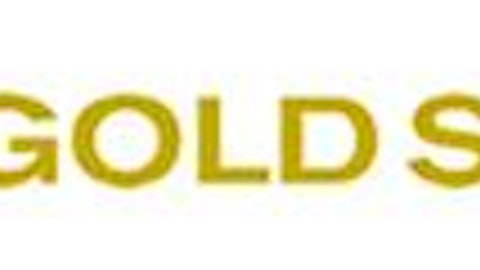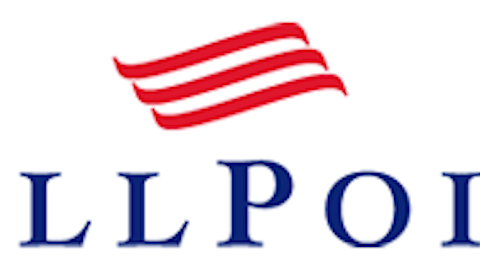As the years have gone on, commodity ETFs have continued to surge in popularity. These vehicles have allowed for investors of all kinds to add vital exposure to hard assets with ease. While there have been a number of innovative products released in the past few years, some have hit home with investors better than others. Below, we outline 10 commodity ETFs that have seen strong inflows as of 9/21/2012, to give you an idea of what is trending in the financial world [for more commodity ETF news and analysis subscribe to our free newsletter].
- SPDR Gold Trust (NYSEARCA:GLD)
- 2012 Inflows: $3.8 billion
- Total Assets: $75.6 billion
- Expense Ratio: 0.40%
- YTD Performance: 13.1%
No surprise here, the king of commodity ETFs continues to hold its crown. At one point GLD had been losing the assets battle with the cheaper IAU, but thus far in the year, this gold product has more than doubled the inflows of its competitor. The fund is currently the second largest ETF in the world and has been steadily making a run to pass SPY for total assets, which it successfully did for a few days back in 2011.
- iShares Gold Trust (NYSEARCA:IAU)
- 2012 Inflows: $1.6 billion
- Total Assets: $11.2 billion
- Expense Ratio: 0.25%
- YTD Performance: 13.4%
Charging 15 basis points less than GLD for near-identical exposure makes this second place a bit of a head-scratcher. For a period of time, IAU had been outpacing its mega-cap counterpart, but it seems that this year has not been quite as kind. Still, as a percentage of total assets gained, IAU’s 16% jump compared to GLD’s 5% is quite impressive. Also note that IAU’s cheaper expense ratio means it will often outperform GLD by a small margin [see also 50 Ways To Invest In Gold].
- Market Vectors Junior Gold Miners (NYSEARCA:GDXJ)
- 2012 Inflows: $1.1 billion
- Total Assets: $3.2 billion
- Expense Ratio: 0.56%
- YTD Performance: 3.1%
The junior gold miner nearly double the inflows of the large cap GDX, as it appears that investors are buying into small cap miners more frequently. One possible explanation is that many of the large cap mining firms work with a number of metals beyond gold, while some of the smaller caps tend to be more focused on their underlying asset. Gold miners have had a volatile year, as this fund was only able to gain 3% despite gold prices moving considerably higher.
- PowerShares DB Com Indx Trckng Fund (NYSEARCA:DBC)
- 2012 Inflows: $869 million
- Total Assets: $6.2 billion
- Expense Ratio: 0.75%
- YTD Performance: 6.7%
DBC is the staple commodities product as it aims to represent the most popular contracts in the world. A healthy jump in assets for this fund generally suggests a higher interest in commodities as a whole, which is always good news. It should be noted, however, that DBC carries a fair amount of energy exposure so it is not quite as diversified as some may think.
- Market Vectors Gold Miners (NYSEARCA:GDX)
- 2012 Inflows: $593
- Total Assets: $10.5 billion
- Expense Ratio: 0.53%
- YTD Performance: 6.6%
Though it was not able to amass the same amount of assets as GDXJ, this fund was able to more than double the performance of its competitor. For the trailing five year period, the fund has jumped by more than 23% as investors have hopped on board with gold equities. A fund like GDX allows you to maintain indirect gold exposure with an equity spin [see also 10 Gold Miners That Pay a Dividend].
- iShares Silver Trust (NYSEARCA:SLV)
- 2012 Inflows: $489 million
- Total Assets: $10.9 billion
- Expense Ratio: 0.50%
- YTD Performance: 24.3%
As many are fully aware, silver is an extremely volatile metal. When things are good, SLV performs very well, but that process also works in reverse. Thus far, 2012 has been kind to this precious metal as SLV’s monster performance may just prove Jim Rogers’ call correct, as he has been adamant about liking silver over gold.
- United States Natural Gas Fund, LP (NYSEARCA:UNG)
- 2012 Inflows: $248 million
- Total Assets: $1.1 billion
- Expense Ratio: 0.60%
- YTD Performance: -23.7%
One of the most hated funds out there, UNG has still turned in a horrible YTD performance despite its massive rally earlier in the year. Natural gas finally caught some momentum this year after enduring a nosedive since the recession hit in 2008. Keep a close on the fund as the winter months roll around as NG demand tends to spike.
- PowerShares DB Oil Fund (NYSEARCA:DBO)
- 2012 Inflows: $218
- Total Assets: $567 million
- Expense Ratio: 0.50%
- YTD Performance: -8.1%
Despite being half the size of the utra-popular USO, this fund was able to edge out its larger counterpart. Whereas USO tracks front-month futures, DBO uses a rules-based methodology that looks to mitigate the impact of contango during its monthly roll [see also Crude Oil Guide: Brent Vs. WTI, What’s The Difference?].
- United States Oil Fund LP (NYSEARCA:USO)
- 2012 Inflows: $174
- Total Assets: $1.3 billion
- Expense Ratio: 0.45%
- YTD Performance: -9.5%
By far the most popular oil fund, USO’s front-month strategy drags behind that of DBO, which may be the reason for the inflow gap. For the most part, USO is a trading instrument and it shows from its average daily volume of nearly 8.8 million.
- ProShares Ultra Silver (NYSEARCA:AGQ)
- 2012 Inflows: $165 million
- Total Assets: $959 million
- Expense Ratio: 0.95%
- YTD Performance: -9.5%
A great inflow for a leveraged product, as a massive return of 94% in the trailing three years helped guide investors into AGQ. Its overall asset base has grown by more than 20% thus far in 2012 and will only continue to surge for as long as silver can maintain its strong bull run [see also 25 Ways To Invest In Silver].
This article was originally written by Jared Cummans, and posted on CommodityHQ.





